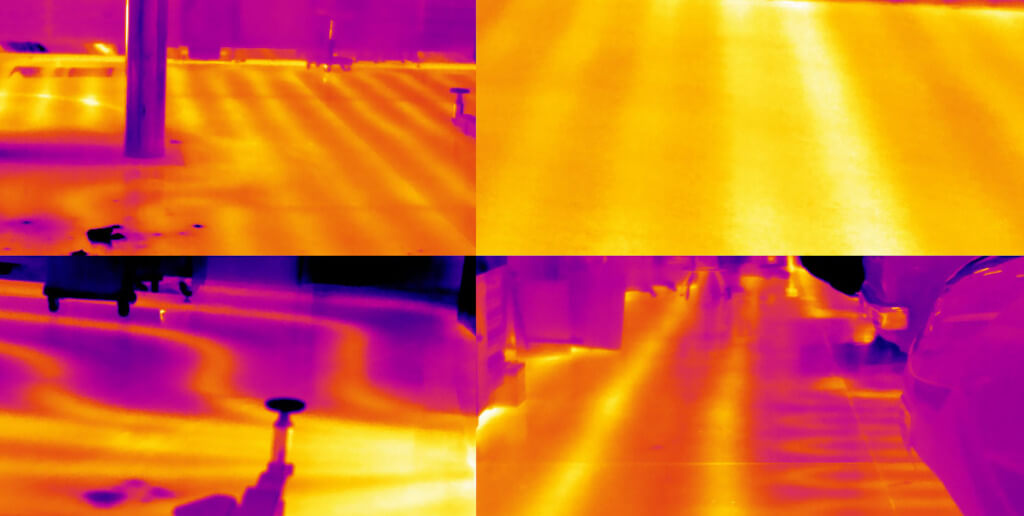Leaks are an extremely common issue in piping systems that are buried underground. Because these leaks are buried underground, it may take some time before they are discovered. This could result in significant issues and significant costs associated with their repair. When these leaks are found sooner rather than later, repairs can be made more quickly. The use of thermal imaging could prove useful in this situation. Infrared thermography can be helpful in the identification of leaks that originate from buried systems, and this is true regardless of the temperature of the product that the buried utilities are carrying.
What Else Does Thermal Imaging Automatically Identify?
Infrared thermography, also known as thermal imaging, is a technique that can detect changes in the infrared portion of the electromagnetic spectrum. Thermal imaging is also sometimes referred to as infrared thermography. Nevertheless, thermal imaging can construe wavelengths that the naked eye cannot ordinarily see. The naked eye can only perceive visible light, but thermal imaging can define longer wavelengths.
Can Leaks Be Detected Using Thermal Imaging?
Definitely. Because anything hotter and drier than absolute zero emanates infrared radiation, thermal imaging is utilized in the process of detecting leaks. Through the process of mapping the various temperatures that have been recorded in a particular area, thermal imaging can show you where water is flowing through pipelines inside of a structure, as well as where the fluid is leaking out of the pipelines.
When the conditions are right, thermal imaging can be utilized to locate leaks that involve utility lines. This could include dripping pipes, which are often ignored because of their inconspicuousness. A thermal imaging camera doesn’t actually “notice” humidity; nevertheless, it is employed to discover subtle temperature differences that often emerge from pipe leaks.
Identifying the Location of a Utility Leak Using Thermal Imaging
Fluid begins to escape into its surroundings as soon as a leak begins to develop in a pipe network that was buried before its installation. If the leak originated in a piping system that is transporting liquid that has recently heated or cooled, then temperature shifts will occur underground in the regions that are covering the leak. A utility locator with thermal imaging capabilities can ascertain this information.
Leaks that originate from piping that is buried underground typically take the form of strange thermal anomalies that have an amorphous shape. Indicators of the severity of this leak will vary depending on several factors, including the following:
- The temperature of the pipe.
- How the pipelines have been put together.
- The depth at which they were located beneath
- The quantity of fluid that was lost
- The quantity of ground cover, as well as the variety of soil
- The amount of moisture that it contained.
When it comes to determining the location of leaks through the use of infrared imaging, there are a few guidelines that everyone should adhere to.
Infrared Imagery Inspections of the Problem Area
It is recommended that inspections of buried pipe systems be carried out either at night or throughout the winter months. In an ideal situation, there would be very little or no wind at all. This is because the differences in temperature underground will be much easier to identify. Infrared imaging technology can have trouble functioning properly when exposed to strong amounts of sunlight.
Solar loading and solar reflection are both common names for this phenomenon. Even if the pipes are located inside, the work can be done during the daytime if it is necessary. To remove interruption from other light and heat inputs, including the sun that may shine through the window, you should do everything in your power to eliminate these sources.
Infrared imaging inspections can be carried out on foot, through the use of an aircraft, or the utilization of a motor vehicle. The thermal imager needs to be moved over the piping pathway itself to complete the inspection. The infrared imaging scanner ought to be able to pick up on pipes given that they are typically constructed linearly with clearly delineated network connections.
f the pipe seems to have a bulge in it, this might be a sign that there is a link in there somewhere. In most cases, this is a shape with hazy boundaries. When compared to the rest of the pipe, the leak might appear on the scanner as a different color than the rest of the pipe. This occurs as a result of the fact that the liquid will typically be either heated or cooled as it travels through the pipe. There will be an abrupt change in temperature as it exits the piping system itself, which should cause the liquid to change color before continuing on its journey.
Can Thermal Imaging Detect Through Cement?
Not Exactly. The thermal imaging hardware can’t see any motion or leakages on the opposite side of the cementitious materials or walls, but it can typically discern temperature variations in the power lines that are flowing through the cement.
How Do You Check to See if There is a Water Drainage Underground?
The use of thermal imaging allows for the detection of groundwater leakages. It can detect the tiniest of temperature variations and habits, which in turn point to the presence of water.
How Well Does Thermal Imaging Locate Humidity?
The use of thermal imaging allows for the detection of moisture as well as the prediction of areas in which mildew could be causing harm. The temperatures that differ between the normal surface temperatures or the temperature of the construction materials and any moisture areas are brought to light by a thermal camera. This is because water has an organic ability to bring down the temp of the substance that it is penetrating.
The Use of Infrared Imaging to Pinpoint Leaks Has several Benefits
After a leak has indeed been located, it must be flagged so that additional inquiries can be made into the matter. The low price of the system, the simplicity of its implementation, and the speed with which it can pinpoint buried leaks are three of the most significant benefits of utilizing a thermal imaging power detector to locate underground utilities. This video presents several of the advantages that can be realized on the job when thermal imaging is utilized to detect leaks.
Utility location crew members can locate the leak without having to conduct extensive excavations and avoid bothersome difficulties, such as having to turn off the water main. This is made possible by thermal imaging technology. Technicians can dig straight down to the source of the leak, which provides the opportunity to make repair work without leaving a large footprint. If these leaks are found and repaired as soon as possible, it will save time and money. This results in cost reductions for the companies.
Innovation Related to Drones and Thermal Imaging
The combination of thermal imaging innovation and drones increases both the accuracy and convenience of the system. A drone that is fitted with a thermal imaging camera can reach practically any location and give an overview of the area to locate a gas or water leak.
To Summarise
The purpose of this article is to provide a concise explanation of what thermal imaging is, how it functions, and how it might be utilized to locate leaks in underground utility lines. These leaks have the possibility of causing significant issues for both residential and commercial places where they occur. Click here to contact professionals at AD Plumbing if you have any questions about infrared cameras and how they might be able to benefit you in the future.
When it relates to addressing a broad range of problems involving buried pipework, they have a significant amount of knowledge in this field. All of your residential and business requirements for underground utilities can be met by their skilled professionals, who will be delighted to help you.




